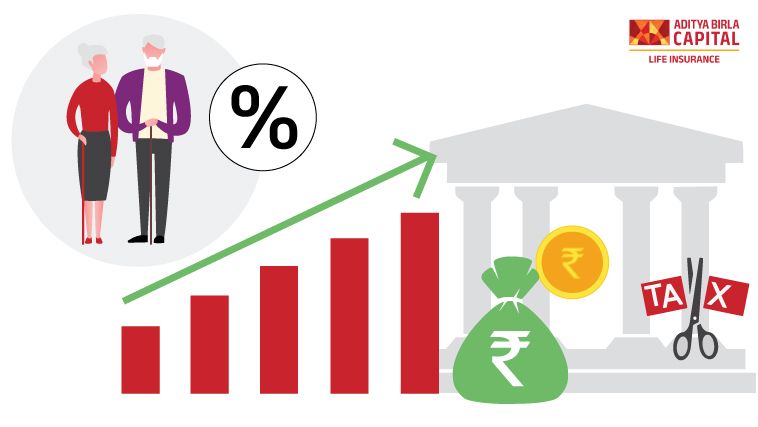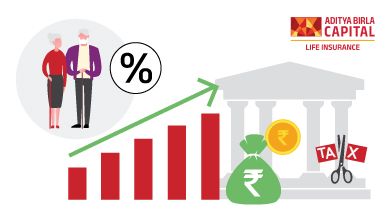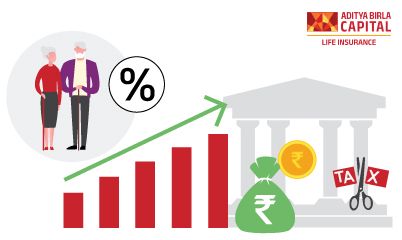Most millennials consider their retirement to be a phase of achievement and happiness. After working hard all their life, most people wish to sit back and enjoy the second innings of their lives. While many wait for their retirement age to near and only then start planning, the smart ones start to plan their retirement very early in life. If you want to pursue your unfulfilled dreams after you retire, you not only need to start working towards this goal early on but also need to find the right investment products. While there is a plethora of options available in the market, Unit Linked Pension Plans are considered to be a long-term retirement solution that offers you multiple benefits.
What is a Unit Linked Pension Plan?
At the onset, a Unit Linked Insurance Plan or a ULPP may look similar to a Unit Linked Insurance Plan, ULIP. While there are certain similarities between the two, the core difference is that, unlike a ULIP, a ULPP does not offer life insurance coverage2. The money you assign is invested in your chosen funds. Just like ULIP, a ULPP also comes with a lock-in period of 5 years. During this period, you cannot withdraw any money that you have invested.
Why Invest in Unit Linked Pension Plans?
You may be thinking of reasons why you may choose to invest in a unit-linked pension plan. Here are the features and benefits of the plan:
Features of a unit-linked pension plan:
- A unit-linked pension plan is a retirement plan where you invest premium for future returns
- Anyone between the age of 35 to 70 years can invest in ULPP
- The policyholder is free to choose the fund in which they want to invest
- Initially, the premium charged is low. However, with time, the payable premium increases
- A unit-linked pension plan has a lock-in period of 5 years, during which a policyholder can make no withdrawal
- The tenure of the policy has to be a multiple of 5 years
Benefits of a unit-linked pension plan:
- ULPP (Unit Linked Pension Plan) ensures that you have a regular source of income once the plan matures
- People willing to take some risk to ensure high returns may go for a ULPP
- ULPP is an easy and quick way to start investing in an organised manner
- The plan gives the policyholder the complete freedom to choose their investment fund
- ULPP gives much-needed mental peace to the policyholder regarding post-retirement income.
How Unit-Linked Pension Plan Works?
Not everyone may have the skills or the aptitude to manage their financial portfolio. However, having a general idea of what a unit-linked pension plan is and how it works can give you a fair idea of how your investment will benefit you in the future.
The premium paid is invested in bonds and government securities for future returns. As these are affected by market fluctuations, the returns may vary. So, it is a preferred option for people who are ready to take some risk for future returns. Depending on the profit of the investment, the policyholders receive assured returns post-tenure of the plan.
Tax benefits1 of Unit Linked Insurance Plans:
Regarding the tax implication, there isn’t much difference between Unit Linked Pension Plans, ULPP and Unit Linked Insurance Plans, ULIP. Here are the tax benefits1 that you can avail of:
- Section 80C:
You can claim a tax deduction of up to Rs. 1.5 lakhs under section 80C for your premiums paid for the unit-linked insurance plans.
- Section 80CCC:
You can claim up to INR 1.5 lakhs against the contributions that you make towards the unit-linked pension plans.
- Section 10(10D)#:
Some unit-linked plans can be considered for your retirement as well, even if it is not annuity plan. The returns you receive out of the policy at the time of maturity are tax exempted under Section 10(10D), provided the sum assured is 10 times the annualised premium. However, this benefit is available only for ULIPs with an annualised premium of less than Rs. 2.5 lakhs a year.
- Section 10(10A):
For unit-linked deferred annuity plans, you can commute upto 1/3rd2 of the entire corpus tax-free1 under section 10(10A). However, the remaining needs to be converted to an annuity and is taxable in the hands of the annuitant as per the applicable tax rates.
- Tax-free switches
5. You can also benefit from the tax-free switches from debt to equity and vice versa without any worry about long-term or short-term capital gains taxation.
Things to keep in mind when going for Unit Linked Pension Plan:
While you are planning for the right unit-linked pension plan, here are a few things that you must not skip:
- Returns:
A ULPP, or a unit-linked pension plan, is purchased with an aim of getting market-linked returns. So, make sure you get a deal that you want and fulfil your future financial need.
- Premium payable:
You must have planned your budget when planning for a ULPP. So, when it comes to the premium part, stick to your budget as the coming life may have various other financial needs as well.
- Risk profile:
Some insurance providers offer 100% debt investment, while some may offer 100% equity investment or a mixture of both. So, choose an investment model with utmost care and analysis for an informed decision.
- Take note of the associated costs:
Your insurance provider may charge fund management fees. Apart from this, there may be certain hidden costs or additional charges. So, before you sign up for a plan, make sure you know all about the various additional charges.
- Read the policy documents carefully:
When you start investing in a plan, do not skip reading the policy wordings. It may seem boring and colossal, but this step is quite crucial. This is the time when you can ask your life insurance provider about any clause or term to have a thorough idea of how the plan works.
Conclusion
Your retirement is going to be a new phase of life, and imagining this phase without a regular source of income can be scary. Unit Linked pension plans offer a smart way to ensure financial stability. However, you also need to bear in mind that there are various other retirement options. When you look out for choices, you would come across investment products such as mutual funds, National Pension Scheme, ULIPs, etc. The decision that you make should cater to various factors, such as your current income, your future plans, your liabilities, and so on. Retirement planning is a crucial thing. Make sure you come to a well-thought-of conclusion.










